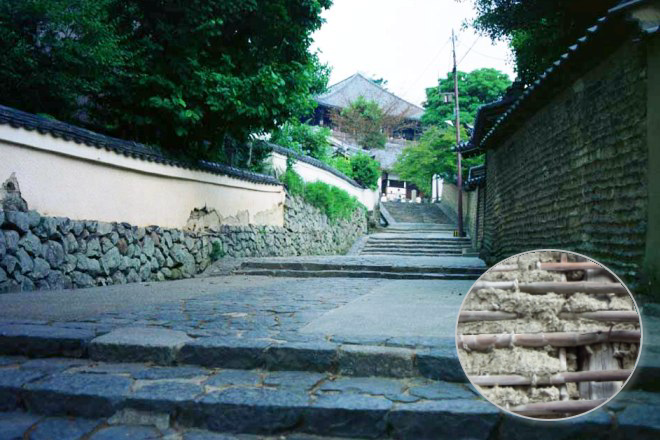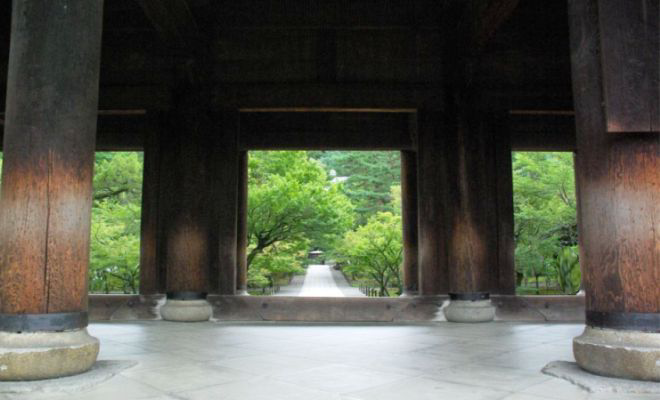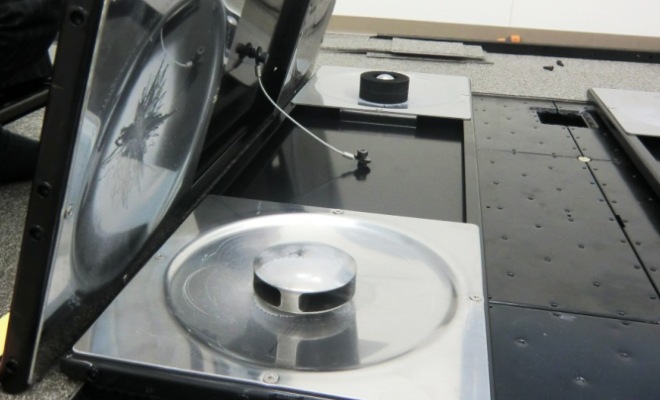The wall of a Japanese traditional house is made with bamboo. The bending of bamboo was a seismic isolation innovation discovered by ancient Japanese people. Conventional isolation devices cannot absorb a giant earthquake well because they rely on rigid bearings that do not have such bending power. ......read more
"Bending" of bamboo in mud walls and "sliding" of granite bases of Buddhist temple gates inspired the mechanics of the abserver®.
You can see that pillars of a main gate of a Buddhist temple rest on granite sills. During an earthquake the pillars slide over the granite and a moderate damping force is born. The abserver® replicates this sliding and friction to produce its damping force ......read more
Abserver is engineered to provide both damping and restoring forces and can prevent such resonance ......read more
Damping vs. restoring forces
Restoring force is the ability to return to original position
Restoring force, or the ability to immediately return to the original position after an earthquake, is a key function of seismic isolation devices. Oblate spheroid bearings in Abserver® shift potential energy to immediately return the device and load to its original position.
Damping force absorbs input vibrations
Damping force is the ability to stop vibration immediately after an earthquake. Seismic isolators with no damping force can be dangerous as they may lead to resonance during aftershocks. Abserver® realizes damping force through the friction between two plates and the oblate spheroid bearing in between. Abserver® transforms force from all directions during an earthquake into horizontal movement and gradually adds frictional resistance to dampen vibrations.

Coexistence of damping and restoring forces
Damping and restoring forces are typically in an inverse relationship
The success of abserver® is the coexistence of trade-off capabilities, both of damping and restoring forces.
Ball bearing or gliding plate-type devices have strong restoring force and weak damping force such that they continue shaking like a pendulum after an earthquake and may become subject to resonance during aftershocks,
whereby vibration is amplified when the direction of aftershocks coincides with the direction of the restoring force.
The abserver® is engineered to provide both damping and restoring forces and can prevent such resonance and restore itself to its original position immediately after an earthquake.
Thus, when evaluating a seismic isolation device it is important to consider both the damping force to absorb vibrations and the restoring force to return the load to an original state.
The greater the damping force the larger the earthquake the device can withstand and the larger the restoring force the more consecutive shakes it can withstand.
Motion image of abserver® during an earthquake

| ①before earthquake | ②during an earthquake (floor and lower plate is sliding) |
③ ④frictional motion from "sliding" |
①: Oblate spheroid at original state. The floor and lower plate begin sliding as an earthquake’s first wave arrives.
②: The longitudinal movement of the bearing absorbs the initial shock.
③: As the shaking continues, the bearing not only absorbs the shock through horizontal movement but also shifts the force slightly vertically by acting as a wedge.
Finally the restoring force acts to bring the device and its load to their original positions.
④: The restoring force of the bearing increases proportionally to the size of the quake.


